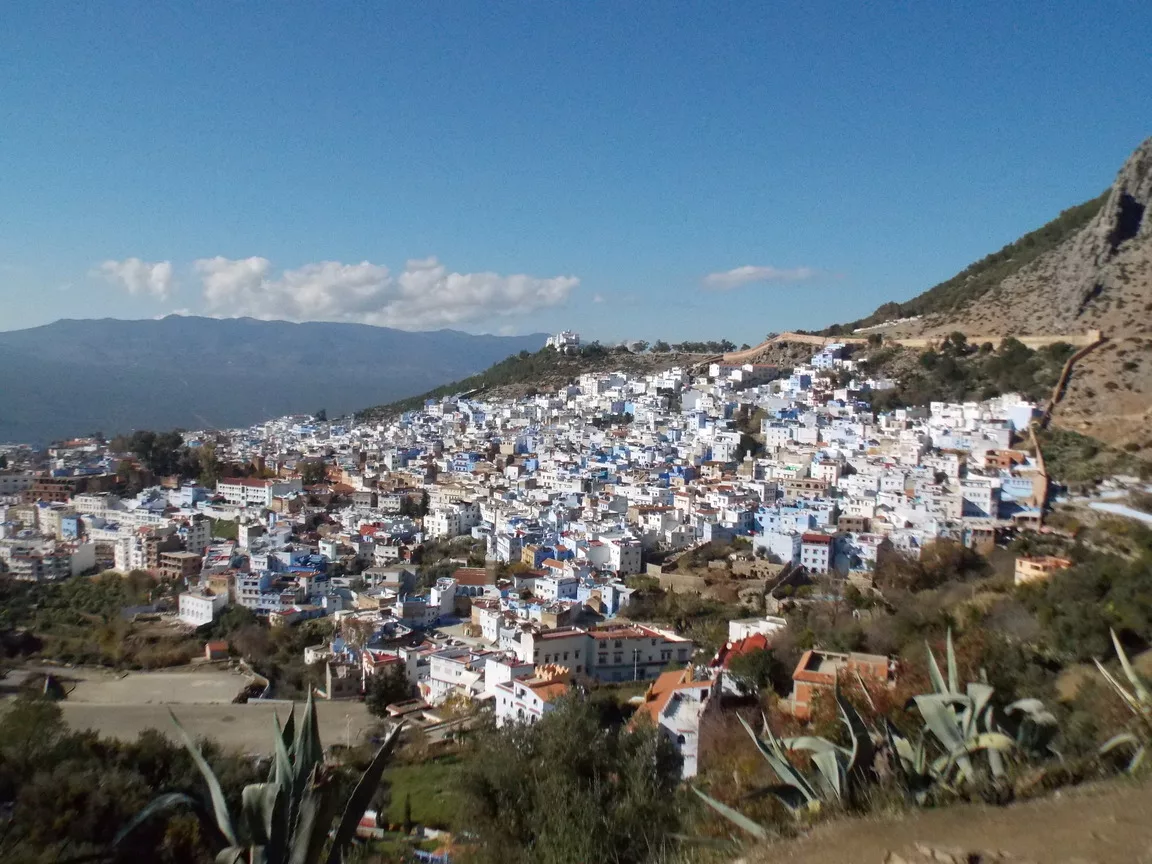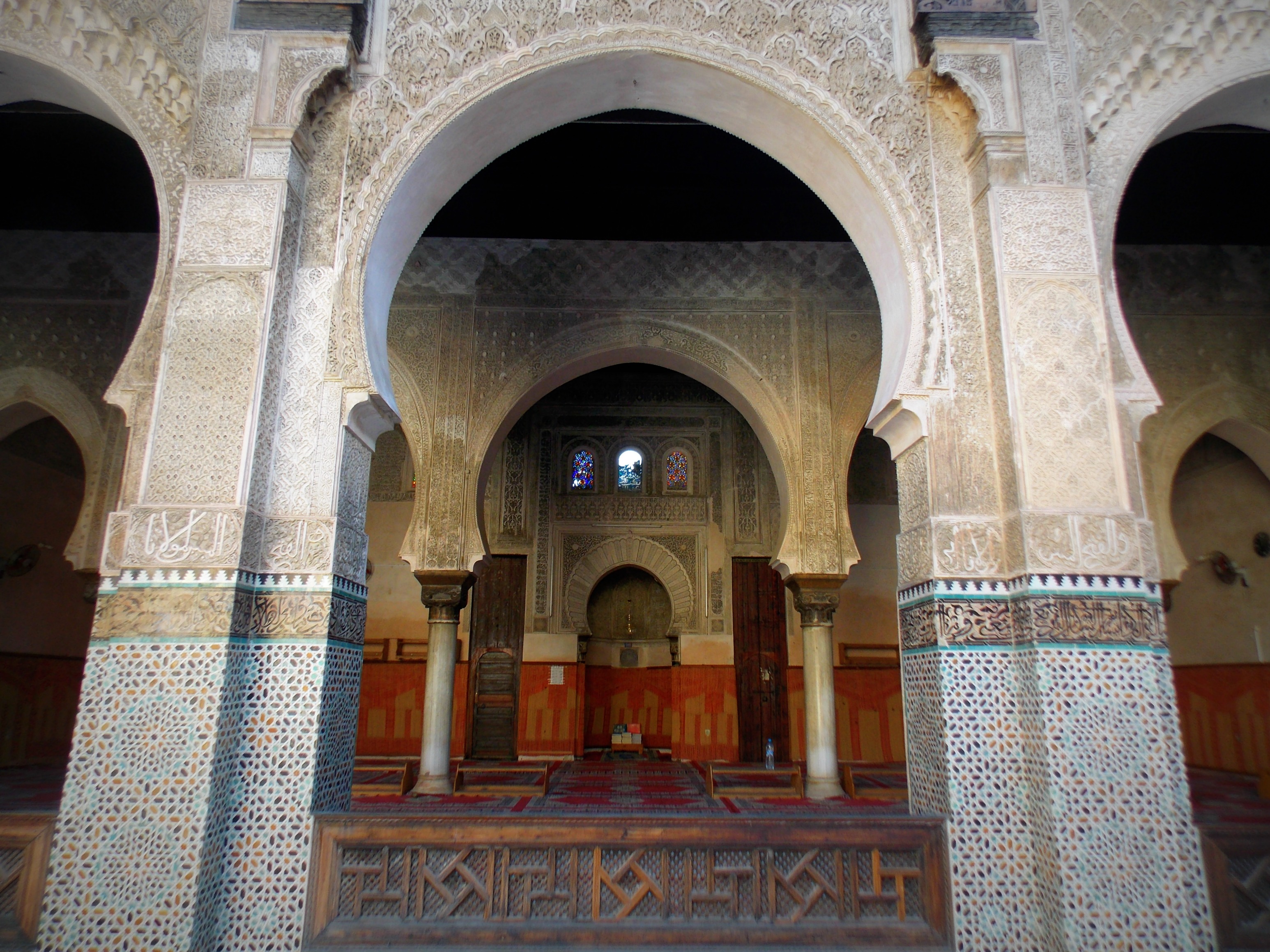Visit La Rioja in 2 Days
Article updated in June 2025
Like France or Italy, Spain is full of fascinating destinations. And although most tourists head to the well-known spots, there are countless small villages and natural areas that are definitely worth a visit.
This is the case with La Rioja, a small autonomous community in northern Spain, famous especially for its wines, and which hides some real gems.
I was lucky enough to live for four years in the Spanish Basque Country. So I took the opportunity to explore the north of the country. Between medieval villages and rolling landscapes, here is a mini guide to visit La Rioja in 2 days with a slow travel approach.
This article contains affiliate links 🙂 They earn me a small commission on bookings, but no worries—there’s no extra cost to you. Thanks for supporting my blog, and enjoy the read!
Plan Your Stay in La Rioja in Just a Few Seconds!
In a rush to plan your trip? This mini-guide has all the essentials you need!
WHERE TO STAY?
- Hotel Marqués de Riscal in Elciego (for a very high-end stay)
- El Molino de Floren in Haro (perfect for couples)
THINGS TO DO:
- A free tour to explore Logroño
- Join a vineyard tour in La Rioja
- Enjoy local specialties and wines from La Rioja
TABLE OF CONTENTS
Visit La Rioja:
Practical information to explore La Rioja:
La RiojA IN A NUTSHELL
La Rioja, located in northern Spain, is an autonomous community renowned for its rich historical heritage and, above all, its exceptional wines.
Bordered by the Basque Country to the west and Navarre to the east, it stretches along the Ebro Valley, benefiting from an ideal climate for viticulture.
Covering an area of about 5,000 km² and with just over 300,000 inhabitants, it is one of the least densely populated regions in Spain.
The regional capital, Logroño, is also a key stop on the Camino de Santiago pilgrimage route.
La Rioja’s history has been shaped by a succession of civilizations: from the Romans to the Moors, through the medieval Christian kingdoms — all of which have deeply influenced the local architecture, language, and gastronomy.
But it is above all its vineyards that have earned La Rioja worldwide fame. Classified as a Denominación de Origen Calificada (DOCa), the highest distinction for Spanish wines, La Rioja is globally recognized for its complex and elegant red wines.
Planning a trip to Spain? Check out my articles on the 15 most beautiful cities in the country, must-see sites, and in-depth guides to Seville, Cádiz, and Córdoba!
ITINErary: Visit LA RIOJA in 2 days
Day 1: Logroño and SANTO DOMINGO DE LA CALZADA
Start your stay in La Rioja with the region’s capital: Logroño, located on the Camino de Santiago pilgrimage route.
The city boasts several cultural sites, with two must-sees: the Santa María Cathedral and the parish church of Santiago El Real.
The cathedral is a 16th-century work, having undergone several renovations in the 17th and 18th centuries. The oldest part is the central nave.
The parish church is especially beautiful, notably for its very colorful ceilings. Also noteworthy are the corners of the main room shaped like a scallop shell — fitting, since this church is dedicated to Santiago.
As for Santiago El Real parish, it holds a special place in the local heritage, both for its architectural value and its close connection to the Camino de Santiago.
Built starting in the 15th century on the remains of an earlier Romanesque temple, the current church features late Gothic architecture, enriched with Baroque elements added over the following centuries.
Its majestic façade, adorned with a stone altarpiece depicting the apostle Saint James as a warrior (Santiago Matamoros), reflects the protective role the patron saint plays over pilgrims.
Logroño also has other places to explore during your visit:
- The Revellín city walls
- The Parliament building
- The Ebro Park
For a comprehensive yet accessible overview of the city, I recommend joining a free walking tour!
Another must-visit spot is, of course, Calle Laurel, famous for its bars serving delicious pintxos.
Among the many pintxos you’ll find on the counters, two are unique to the Rioja capital:
- La zapatilla de jamón: very thin slices of cured ham on a large piece of bread, toasted in the oven.
- El txampi: a piece of bread topped with three large mushroom caps, a small shrimp, and a delicious sauce.
Pintxos are a specialty of northern Spain: a small serving of food on a slice of bread. They’re usually enjoyed alongside a drink. In fact, they’re so popular that there’s even an expression for it — ir de pintxo-pote — which means going out to drink and eat pintxos.
You probably already know this! La Rioja is the land where some of the greatest wines of the Iberian Peninsula are produced, and in Logroño, you can taste dozens of them.
If you’re a fan of this drink, I recommend exploring the surrounding vineyards and, at the same time, enjoying some wine tastings.
You can also join this excursion departing from Logroño that will immerse you in the winemaking traditions of the region!



Next stop: Santo Domingo de la Calzada, a perfect destination for pilgrims on the Camino de Santiago. There are two must-see places here!
First up is the cathedral, which houses… a rooster and a hen. Yes, you read that right!
This building, constructed between the 12th and 18th centuries, blends Romanesque, Gothic, Renaissance, and Baroque styles.
What makes it truly unique is its Gothic chicken coop, home to a live rooster and hen. This unusual feature refers to the miraculous legend of a wrongly accused pilgrim who was saved by Saint Dominic.
The second highlight is the Camino de Santiago Interpretation Centre, which offers a deeper understanding of this mythical route. Everything is designed to put you in a pilgrim’s shoes.
With a cape over your shoulders and a stone in hand, you’ll walk through rooms symbolizing the different stages of the journey—heat, darkness, forests… The visit is highly educational, fun, and enlightening.
I also recommend soaking up the medieval charm of the town—its cobbled streets, ancient walls, and rich religious heritage—by wandering around at your own pace.




DAY 2: HARO and EZCARAY
Here’s what’s on the agenda for your final day: Haro!
The village’s economy is primarily centered on winemaking, but it’s also renowned for its rich cultural heritage and historic architecture.
Its charming main square is worth a quick stop before you wander through the narrow medieval streets, filled with bars and restaurants that spill delicious aromas into the air.
The most striking monument is the Church of Saint Thomas, a blend of late Gothic and Renaissance styles, with a particularly impressive façade.
Its elegant bell tower and finely carved details reflect the artistic richness of the era and highlight Haro’s importance during the golden age of the wine region.
The town is also home to some of the oldest wineries in the area, including López de Heredia, Muga, and La Rioja Alta—perfect places to uncover the secrets behind Rioja wine production.



Spend your afternoon in the village of Ezcaray, a place that thrives on tourism, especially in winter thanks to its nearby ski resort. The scent of wood lingers in every alleyway, and the atmosphere is warm and family-friendly.
It reminds me of the typical vibe of a mountain village in the Alps.
Ezcaray also boasts a rich textile heritage and is renowned for its blankets and woolen fabrics, which are crafted using traditional techniques.
The village center charms visitors with its lovely architecture: stone or timber-framed houses and flower-filled balconies.
At the heart of the village stands the Church of Santa María la Mayor, a 15th-century fortress-like building classified as a historic monument. Built from ashlar stone, it combines Gothic and Renaissance elements.
And I should add: I’ve only mentioned a handful of villages for this La Rioja itinerary—there are so many more worth exploring!


When to go to LA RIOJA?
The best time to visit La Rioja is between May and October.
During this period, temperatures range from 20 to 30 degrees Celsius, and the days are generally sunny—perfect for enjoying both the towns and the countryside.
September and October are especially appealing, as they coincide with the grape harvest season. You’ll have the chance to take part in local harvest festivals.
In winter, temperatures can drop significantly and rainfall is more frequent, so it’s generally a time to avoid.
How to reach LA RIOJA?
One thing’s for sure: you’ll need a vehicle to explore the region! But before that, let’s look at how to get there.
✈️ By plane
The closest airport to La Rioja is Logroño-Agoncillo (RJL), but it offers very few flights. Most international visitors prefer flying into Zaragoza, Bilbao, or Pamplona instead.
From there, you can take a train, bus, or rent a car to reach the region.
🚄 By train
From Barcelona, Madrid, Burgos, Vitoria-Gasteiz, or Zaragoza, you can take a regional train to Logroño (2 to 3 hours).
🚗 By car
From southern France, the A64 and AP-68 highways will get you to Logroño. The same applies if you’re coming from northern Spain—just follow the AP-68, a well-maintained and clearly marked route.
🚌 By bus
Several companies, including Alsa, offer affordable routes from Madrid, Bilbao, Zaragoza, Pamplona, San Sebastián, and more.
HOW TO MOVE AROUND LA RIOJA?
It is entirely possible to travel between the towns and many picturesque villages of La Rioja thanks to the regional bus network.
This allows you to explore the region in an economical and eco-friendly way, while enjoying the vineyard landscapes that stretch along the roads.
However, if you want to discover the wine routes, small villages off the main paths, or simply travel at your own pace, renting a car remains the most flexible option.
If you’re not arriving with your own vehicle, consider renting one! It will also give you the freedom to visit family-run bodegas and make spontaneous stops along the way.
WHERE TO SLEEP IN LA RIOJA?
La Rioja offers a wide range of accommodation options for every type of traveler and every budget.
You can even spend the night at a bodega! Some of them offer rooms or suites with views of the vineyards:
- Eguren Ugarte in Laguardia ($$): This family-run winery with original architecture is the perfect spot for a romantic stay.
- Hotel Marqués de Riscal in Elciego ($$$$): A futuristic building designed by the famous Frank Gehry, ideal for an ultra-luxurious getaway!
Charming boutique hotels, often located in tastefully renovated historic buildings, are also plentiful in the region:
- Hotel Viura in Villabuena de Álava ($$): A stylish hotel with a rooftop terrace overlooking the Sierra de Cantabria, offering modern and comfortable rooms.
- Hotel Ciudad de Logroño in Logroño ($$): A centrally located hotel with wooden floors and a very modern interior design!
For travelers on a tighter budget, hostales and guesthouses are widely available, especially in Logroño:
- Hotel Condes de Haro ($$) in Logroño: A modern hotel on a pedestrian street, perfect for couples or solo travelers.
- El Molino de Floren ($$) in Santo Domingo de la Calzada: This former mill turned hotel offers simple but comfortable rooms. I spent a night there and highly recommend it!
Finally, casas rurales (rural homes) let you fully enjoy the natural surroundings. These are often carefully restored stone houses—ideal for disconnecting and relaxing in peace:
If you are a wine lover and visit La Rioja, you will have the perfect opportunity to discover the region’s great local vintages. For everyone else, the area offers stunning places to slow down and truly enjoy the moment.
Share this article “Visit La Rioja in 2 Days” on Pinterest!



post a comment cancel reply
This site uses Akismet to reduce spam. Learn how your comment data is processed.




